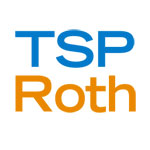Investors in the Thrift Savings Plan can choose from any of the available 10 funds we describe and track on our TSP Funds page, but rather than getting into the nitty gritty details about each fund, this post presents a high level overview of what you’re investing in when you choose any of these funds. It answers the question: What are my investment options in the Thrift Savings Plan?
At the highest level, the Thrift Savings Plan gives you the option to invest in two asset classes: stocks and bonds. An asset class is nothing more than an investable universe of securities that can be grouped together because of similar security type, historical return and risk characteristics.
TSP Bond Funds
In the bond category, you have a choice of two funds: the TSP F Fund and the TSP G Fund. The F Fund invests in high grade United States government and corporate bonds. Like most other TSP funds, this is an index fund. It is very well diversified, holding over 7,800 different bonds issued by various U.S. corporations and government agencies. The F fund does not invest in lower grade bonds such as high yield or “junk bonds” and it also does not invest in any international bonds. Many investment advisors consider this to be a good thing.
The other fixed income option is the TSP G Fund. It’s the only TSP Fund which is guaranteed not to lose any money. So if you’re the type of investor who likes to buy bank certificates of deposit (CDs) or put your money into savings accounts, this is the fund for you. It shouldn’t be a surprise that this safety also comes at a cost: the long-term historical returns of the G Fund are lower than those of the F Fund or any of the stock funds. As an example, the G Fund returned 2.46 percent in 2011, compared to an 8.25 percent gain for the F Fund. (That’s not to say that the F Fund always has such high annual returns, far from it!)
One of the big risks that investors face is inflation, and when you compare an investment in the G Fund against the F Fund or any TSP stock fund, you should consider the fact that the historical rate of inflation in the U.S. is around 3 percent per year. If your investments return anything less than this, they’re not keeping pace with the rate of inflation and your “purchasing power” (the money you save now to buy goods and services in retirement) is declining over time.
Bonds historically have proven to be a “slow and steady” type of investment compared to other securities such as stocks. In the very long run, they don’t offer the highest returns, but they also do not lose as much of their value during downturns.
TSP Stock Funds
The Thrift Savings Plan also offers three stock funds: the TSP C Fund, TSP S Fund, and TSP I Fund. All are index funds. Two are U.S. stock funds, while the third (the I Fund) invests in international stocks. Diversifying your stock holdings into foreign stocks is generally considered a good thing, and the I Fund gives you this option by tracking the performance of an index that invests in over 950 “blue chip” (large capitalization) stocks in 21 international countries. As far as the U.S. stock funds are concerned, the C Fund is invested in an index that tracks the 500 largest domestic large capitalization stocks, known as the S&P 500 index. And the S Fund tracks an index of approximately 3,300 small to medium sized companies.
Historically speaking, small cap stocks (such as those in the S Fund) have enjoyed slightly higher returns than large caps, which is why many investors allocate a small portion of their stock holdings to this type of fund. As is so often the case in investing, this additional return has come at the cost of higher volatility, with the S Fund declining faster and further than the C Fund during economic downturns. The same can be said for the international stocks in the I Fund (both higher historical returns and risk). We keep repeating the word “historical” because that’s all we can state with certainty; what the future holds in terms of risk and return is by no means guaranteed.
Another important reason that an investor may want to choose the S Fund and I Fund in addition to their core C Fund stock holdings is that these funds do not always move in tandem. This low correlation is also why many investors diversify their holdings into both stocks and bonds instead of holding just a single asset class. At times, one or more funds will “zig” while others “zag”. Because the funds are not perfectly correlated, this provides a measure of diversification which cushions losses during bear markets (periods of economic decline).
TSP Lifecycle Funds
If you like the idea of mixing and matching various TSP stock and bond funds to create a diversified portfolio, but don’t have the time, interest, or skill to stay on top of your portfolio, you should consider investing your plan assets into one of the TSP Lifecycle funds. These are target retirement date funds. The idea is that you first determine your personal expected retirement date, lets say 2042, and then choose the Lifecycle fund nearest that target date (the TSP L 2040 fund in this case). The L fund managers will take it from there for you. They will regularly rebalance the fund’s holdings to stay true to its planned asset allocation percentages, buying or selling bond or stock fund shares as needed. As the fund nears its target date, they’ll make sure that the asset allocation is adjusted to be more conservative (more bonds, fewer stocks). In all there are five Lifecycle funds, with target retirement dates ranging from now (current retirees) to 2050.
Before you invest in any L Fund, make sure that you thoroughly understand what percentage of the fund is allocated to stocks versus bonds, and how this is expected to change as you get near retirement. For example, investors in the TSP L 2050 fund may be surprised to know that it currently holds almost 90% in stocks and only 10% in bonds. Even if your target retirement date is near 2050, you may not want an allocation that is this aggressive. As an example, this portfolio combination would have lost 46% of its peak value during the most recent 2008-2009 global financial crisis. And if you look back further, say during the 1920-1930s, an unlucky investor with this portfolio combination could have lost as much as 80% of his savings. Note that this example is not meant to scare anyone away from the Lifecycle funds, nor do we suggest that the future will be like the past. It’s simply an illustration of the kind of risk you could be taking on if you choose an aggressive portfolio allocation.
So there you have it: five individual TSP funds, and 5 target date funds. Those are your investment options. Investors interested in digging a little deeper should definitely check out our detailed pages on all individual funds, complete with statistics and performance charts updated every business day, or an overview of the latest data on all TSP funds. Now that you understand the basic building blocks, how do you actually invest in the Thrift Savings Plan?


